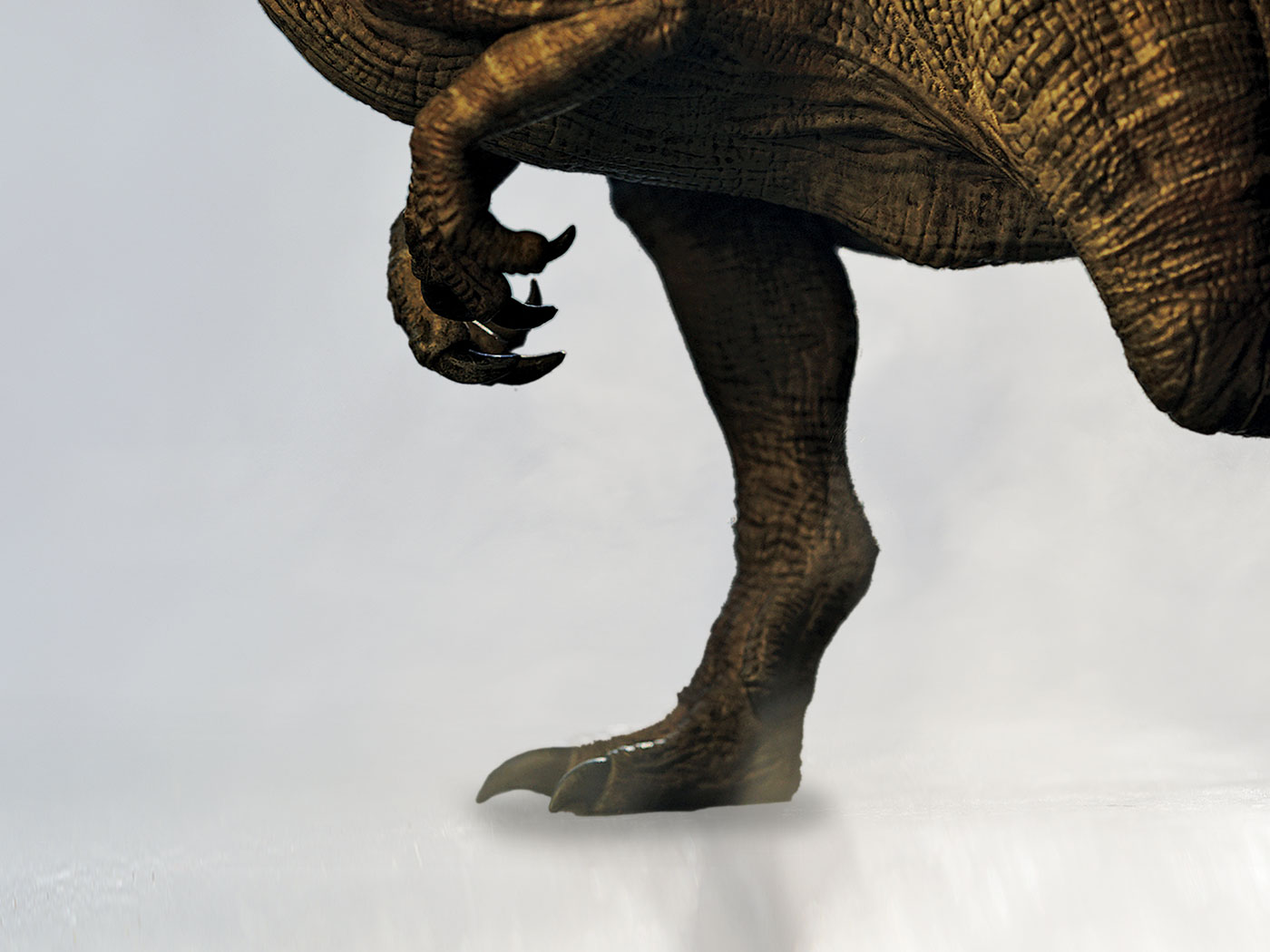Researchers have announced that a human-looking bone discovered in the Hadar Formation in Ethiopia belongs to Australopithecus afarensis, prompting one major news headline to proclaim, "Ancient Foot Bone Proves Prehuman Lucy Walked Tall."1
Australopiths are extinct apes known only from fossils. "Lucy" is the most famous example, and she was long thought to represent an evolutionary transition between ape-kind and mankind. The latest discovery is taken as additional evidence that human ancestors gradually morphed from tree-dwelling apes, but what does this newly described bone actually prove?
The bone looks just like a human fourth metatarsal. This connects from a heel bone to the fourth toe over from the big toe, spanning the arch across the middle of the foot. Its description, published in the journal Science, clearly showed that the foot bone is within the range of modern humans and does not match any metatarsals from living apes or show any hint of being ape-like.2
In an interview with CBC radio, lead author Carol Ward said, "Lucy’s foot would have been just like yours or mine."3 But this blatantly ignores prior finds showing that Lucy’s foot was actually configured like a hand, with a thumb-like big toe projecting sideways. And what if the foot bone in question was actually from a human and not from an Australopith at all? Since it was not attached to any other bones, this possibility should have been weighed.
The study authors wrote, "We assign AL 333-160 [the bone’s designation] to A. afarensis, the only hominin species in an assemblage of [more than] 370 hominin specimens so far recovered from the Hadar Formation."2 The evolutionary term "hominin" includes apes, humans, and imaginary human-like or "pre-human" apes.
But their reasoning is flawed. First, they asserted that no modern human bones have been found in this deposit. They evidently interpreted this to mean that no human bones could be there. Then they concluded that the human-looking bone belonged to an ape.
But asserting that no human bones have been found is entirely self-serving! What if they have been found but were misidentified, being unexpected? AL 333-160 could actually be just what it looks like…a human foot bone. If so, then it contradicts the very assertion on which their argument rests.
Researchers could more easily discern Lucy’s mode of locomotion if more bones were found connected together. The most complete Australopith skeletons show that they had none of the skeletal features, including hip, spine, femur, and foot bone structures, that enable the uniquely human manner of walking.4 In fact, Lucy-like specimens have indicated characteristic flat ape feet with curved toes, not arched feet as the media have claimed.5
Is one bone singled out from a scrap heap of "greater than 370" individual bones the best evidence for an upright-walking ape?2 If this bone actually was from a "Lucy," it would be the first A. afarensis skeletal feature discovered that is not ideally suited for life in trees. But to assert that this one bone was an Australopith’s is to beg the question. It no more belonged to a Lucy than the famous pig’s tooth belonged to the fraudulent "Nebraska Man."
This bone has not proven that Lucy walked, but instead illustrates how improper science leads to flawed conclusions.
References
- Walsh, J. Ancient Foot Bone Proves Prehuman Lucy Walked Tall. Fox News. Posted on foxnews.com February 11, 2011.
- Ward, C. V., W. H. Kimbel and D. C. Johanson. 2011. Complete Fourth Metatarsal and Arches in the Foot of Australopithecus afarensis. Science. 331 (6018): 750-753.
- Playing Footsie with Lucy. Quirks & Quarks. Canadian Broadcasting Corporation radio program. Posted on www.cbc.ca February 12, 2011.
- See Thomas, B. Human Foot Bone Misidentified as Lucy’s. ICR News. Posted on icr.org February 18, 2011. See also Thomas, B. Human Evolution Story Stumbles Over Footprints. ICR News. Posted on icr.org April 6, 2010.
- Stern, J. T. and R. L. Susman. 1983. The Locomotor Anatomy of Australopithecus afarensis. American Journal of Physical Anthropology. 60 (3): 279-317.
Image Credit: Copyright © 2011 AAAS. Adapted for use in accordance with federal copyright (fair use doctrine) law. Usage by ICR does not imply endorsement of copyright holders.
* Mr. Thomas is Science Writer at the Institute for Creation Research.
Cite this article: Thomas, B. 2011. "Lucy’s" New Foot Bone Is Actually Human. Acts & Facts. 40 (4): 17.















